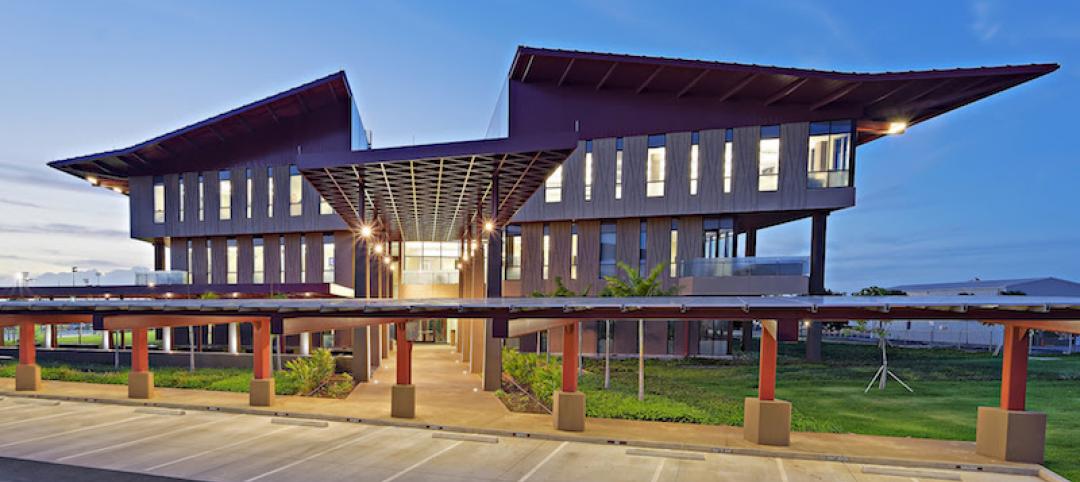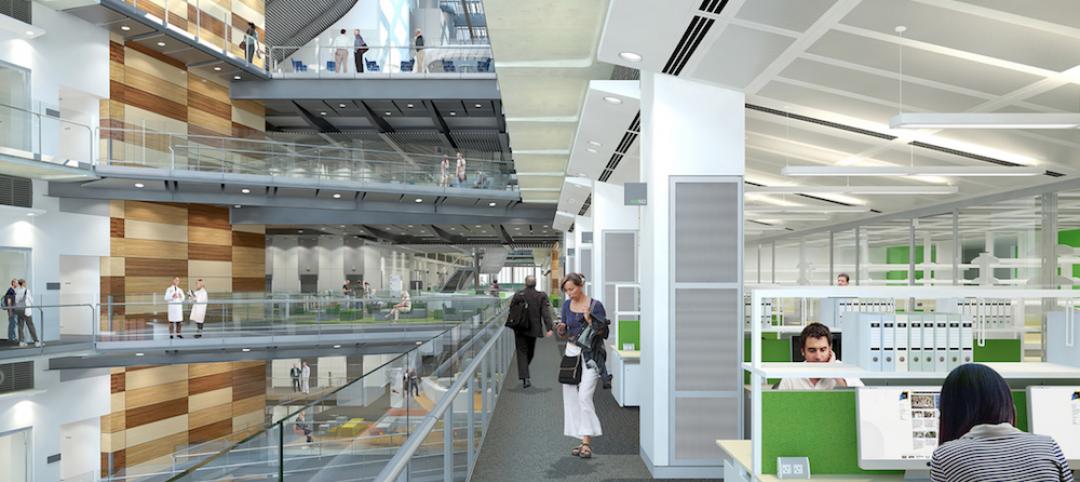An R&D building on the Billerica, Mass., campus of EMD Serono—a biopharmaceutical business of Merck KGaA, Darmstadt, Germany that focuses on specialty care—became the first in the United States to receive Gold-level certification for New and Existing Buildings from the International WELL Building Institute.
The Sagamore Building, as it is known, is part of a three-building, 275,000-sf campus with more than 500 employees who work to accelerate R&D innovation in oncology, immune-oncology, and immunology. The campus is one of four global R&D hubs for the company.The Sagamore Building, which was completed last year, has also earned LEED Platinum certification from the U.S. Green Building Council.
To achieve WELL certification, EMD Serono started with a two-day design charette that included architects, engineers, designers, and facilities managers who brainstormed, built models, and challenged notions of space. (The Building Team included Boston-based architect Ellenzwieg.)
To meet WELL’s building standard, the project—which included a new addition and a retrofit of an existing building—installed WELL-compliant lighting fixtures, and MERV 15 high efficiency air filters under ASHRAE 52.2/MERV. EMD Serono also changed to compliant cleaning chemicals and protocols, and increased its preventive maintenance schedules to quarterly, with photographic documentation of service.

EMD Serono's Sagamore Building offers its employees a variety of healthier spaces in which to work and collaborative. Image: EMD Serono
Employees now have a variety of work environments to choose from, including open spaces, huddle rooms, and designated technology-free quiet zones. WELL also requires stairs between floors to encourage exercise and occupant movement. The design of the Sagamore building’s bleacher seating and auditorium was conceived during the design phase. The seating’s construction involved rebar and build forms that were supported with special staging for several concrete pours.
The Sagamore Building underwent testing and a final evaluation by Green Business Certification Inc. (GBCI), WELL’s third-party certification entity, which corroborated that the built environment was designed to improve occupants’ nutrition, fitness, mood, sleep patterns and performance.
Anthony Meenaghan, EMD Serono’s Senior Director, Facilities Management and Engineering, Environmental Health & Safety, says the WELL certification highlights his company’s collaborative and knowledge-sharing culture. “Offering employees an environment where they can do their best work plays an important role in bringing meaningful solutions to people with difficult-to-treat diseases.”
Related Stories
Laboratories | Sep 26, 2016
Construction has finished on the world’s largest forensic anthropology lab, designed by SmithGroupJJR
The lab’s main purpose will be to help in the investigation, recovery, and accounting of Americans lost in past wars.
Laboratories | Aug 8, 2016
The lab of the future: smaller, flexible, tech-enabled, business focused
A new CBRE report emphasizes the importance of collaboration and standardization in lab design.
Laboratories | Jun 16, 2016
How HOK achieved design consensus for London's Francis Crick Institute
The 980,000-sf, $931 million facility is the result of a unique financing mechanism that brought together three of the U.K.’s heaviest funders of biomedical research—the Medical Research Council, Cancer Research UK, and the Wellcome Trust—and three leading universities—University College London, Imperial College London, and King’s College London.










